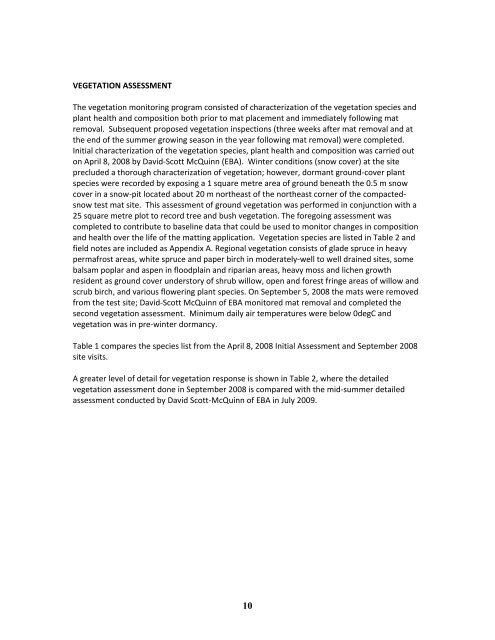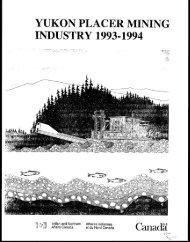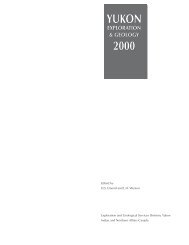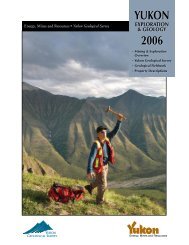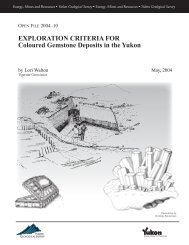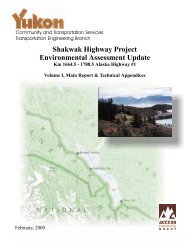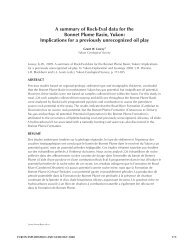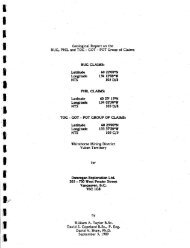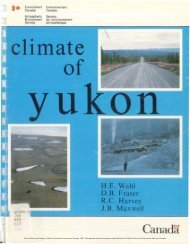Eagle_Plain_matting_..
Eagle_Plain_matting_..
Eagle_Plain_matting_..
You also want an ePaper? Increase the reach of your titles
YUMPU automatically turns print PDFs into web optimized ePapers that Google loves.
VEGETATION ASSESSMENT<br />
The vegetation monitoring program consisted of characterization of the vegetation species and<br />
plant health and composition both prior to mat placement and immediately following mat<br />
removal. Subsequent proposed vegetation inspections (three weeks after mat removal and at<br />
the end of the summer growing season in the year following mat removal) were completed.<br />
Initial characterization of the vegetation species, plant health and composition was carried out<br />
on April 8, 2008 by David‐Scott McQuinn (EBA). Winter conditions (snow cover) at the site<br />
precluded a thorough characterization of vegetation; however, dormant ground‐cover plant<br />
species were recorded by exposing a 1 square metre area of ground beneath the 0.5 m snow<br />
cover in a snow‐pit located about 20 m northeast of the northeast corner of the compacted‐<br />
snow test mat site. This assessment of ground vegetation was performed in conjunction with a<br />
25 square metre plot to record tree and bush vegetation. The foregoing assessment was<br />
completed to contribute to baseline data that could be used to monitor changes in composition<br />
and health over the life of the <strong>matting</strong> application. Vegetation species are listed in Table 2 and<br />
field notes are included as Appendix A. Regional vegetation consists of glade spruce in heavy<br />
permafrost areas, white spruce and paper birch in moderately‐well to well drained sites, some<br />
balsam poplar and aspen in floodplain and riparian areas, heavy moss and lichen growth<br />
resident as ground cover understory of shrub willow, open and forest fringe areas of willow and<br />
scrub birch, and various flowering plant species. On September 5, 2008 the mats were removed<br />
from the test site; David‐Scott McQuinn of EBA monitored mat removal and completed the<br />
second vegetation assessment. Minimum daily air temperatures were below 0degC and<br />
vegetation was in pre‐winter dormancy.<br />
Table 1 compares the species list from the April 8, 2008 Initial Assessment and September 2008<br />
site visits.<br />
A greater level of detail for vegetation response is shown in Table 2, where the detailed<br />
vegetation assessment done in September 2008 is compared with the mid‐summer detailed<br />
assessment conducted by David Scott‐McQuinn of EBA in July 2009.<br />
10


